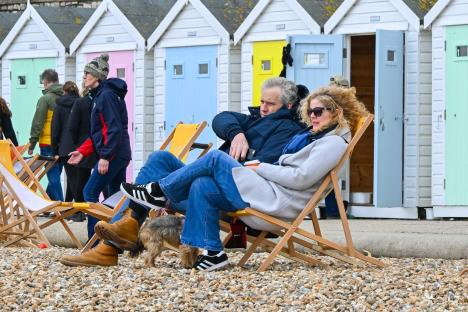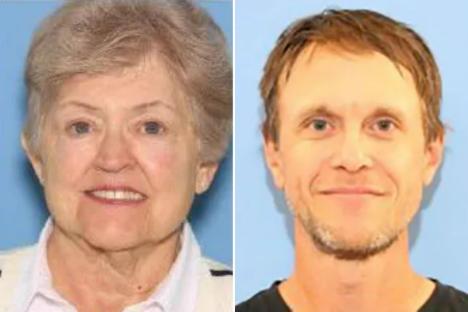The head of one of three field hospitals in Ontario that received its first patient this week says the function of the structures is a simple one — to create capacity.
Robert Burgess, senior director of emergency preparedness at Sunnybrook hospital in Toronto, says the Mobile Health Unit (MHU) is expected to run with a very “systemized” approach managing patients from hospitals across the GTA and beyond.
Read more: Canadian military's COVID-19 medical task force assuming duties at Toronto's Sunnybrook hospital
“If we create capacity by using the MHU that frees up other hospitals, so that patients can move through the system, we reduce the time that it takes to see patients,” Burgess told Global News.
“We reduce the challenges around patients having to wait for their care by creating this additional capacity.”
View link »Planning and construction for the MHU at Sunnybrook Health Sciences Centre began in February with the facility becoming operational last month.
Measuring 2,088 square metres (22,475 square feet), the MHU is located in one of the large parking lots at the north end of Sunnybrook’s Bayview Campus and has capacity for 84 beds, 100 if needed.
The 2,088 square metre mobile health unit built in a parking lot at Toronto's Sunnybrook hospital accepted it's first patient in late April.
Sunnybrook HospitalThe unit is furnished with an X-Ray machine, physical therapy tools, heat, air conditioning and the same beds found in permanent hospital.
The field hospital was activated in mid-April by the Ministry of Health amid rising hospitalizations caused by the COVID-19 pandemic.
As of Thursday, Ontario reported 2,248 hospitalized in people with COVID-19 with 884 in intensive care units (ICU) and 620 patients on a ventilator.
The first patient was transferred to Sunnybrook’s Mobile Health Unit today.
Ten beds within the Mobile Health Unit have been made available to help ease pressures in acute care hospitals.
âž¡ï¸ Read more: https://t.co/0wNPKg8Vpt pic.twitter.com/UEaIYXUVtd
— Sunnybrook Health Sciences Centre (@Sunnybrook) April 26, 2021
The first patient was transferred to one of 10 bed tents at Sunnybrook on Monday. The facility is expected to receive more on Friday in addition to adding Canadian Armed Forces medical and logistical personnel.
Burgess says the typical patient in the unit will be those that are considered COVID-recovered who will have an average stay of between three to five days.
Mobile Health Unit in Hamilton
Meanwhile, a parking lot on Wellington Street just outside of Hamilton General is the site of the another MHU, which is slated to become operational at the end of May.
Kelly Campbell, vice president, corporate services and capital development at Hamilton Health Sciences, says the facility will similarly house hospital beds and amenities like Sunnybrook but serve the entire Ontario West Region.
Toronto's Sunnybrook Hospital admits first patient into mobile health unit
02:09 Toronto's Sunnybrook Hospital admits first patient into mobile health unit 02:05 Coronavirus: Sunnybrook field hospital pops up amid concerns of 3rd wave“We have more tents than we have wards,” said Campbell.
“We'll have eight or up to ten beds each. So a total capacity of 80 patients.”
Campbell says Hamilton and the west region is currently taking in about 30 patients a day from the GTA and the MHU is another resource in the event of pressure on the system.
Hamilton Health Sciences mobile health unit sits in a parking lot outside of the General hospital on Wellington Street North.
Hamilton Health Sciences“We're planning on patients with a shorter length of stay, up to five days,” said Campbell.
“They would be acute medical or surgical patients, preferably not COVID, but they could also be recovering from the virus.”
Read more: Ontario says a COVID-19 field hospital is expected to take patients late April
Staff for the Hamilton site will be a blend of HHS personnel and new health care workers. Some will come from departments that were scaled back amid cut backs in surgeries and other elective procedures.
Both HHS and St. Joe’s hospitals moved forward with ICU surge plans in mid-April relocating patients to other units in addition to reassigning staff due to significant growth in ICU capacity.
Canadian Armed Forces could also be earmarked for the city as HHS are in discussions with the service.
Campbell says the difference between care in the MHU and the nearby brick and mortar sites will be obvious.
Read more: Hamilton reports 154 new COVID-19 cases; vaccinations open to child-care workers amid 6 outbreaks
“It's like the difference between camping and staying in a hotel. This is a tent,” said Campbell.
“So while some of the equipment will be familiar to staff, the environment is very different for both patients and staff.”
As of Thursday, Hamilton hospitals are treating 165 COVID-19 patients. There are 119 COVID-19 patients at HHS hospitals with 54 in intensive care. St. Joe’s says it has 46 total patients.
Joseph Brant's Pandemic Response Unit
A similar structure, also for those with mild to moderate COVID-19 symptoms, was built at Joseph Brant Hospital last year and began operating in early January.
Rob MacIsaac, president and CEO at HHS, said the 1,486-square-metre (16,000 square feet) ‘Pandemic Response Unit' PRU was built in efforts to preserve critical hospital capacity for the “sickest patients” in a “stretched” healthcare system.
The Pandemic Response Unit outside of Joseph Brant Hospital in Burlington, originally built for COVID-19 patients, was converted to a vaccination clinic for Halton region in March 2021.
Joseph Brant Hospital“All of the region’s hospitals are working closely together to ensure that care can be delivered safely with limited disruption to patients,”; MacIsaac said in January.
The ‘Pandemic Response Unit' (PRU) is currently a mass vaccination site for Halton Region which has given out over 14,000 shots as of Thursday.
Read more: Pandemic response unit at Burlington hospital to begin admitting COVID-19 patients this week
A spokesperson for Joseph Brant said the PRU is flexible and can be converted within' 24 hours to accommodate COVID-19 patients should the need arise.
“We are continuing to work closely with regional and provincial health partners to monitor the evolving situation and assess local and regional risk and the need for PRU capacity,” said Ann Lamanes in an E-mail to Global News.
“The decision to shift the PRU back to COVID care would be a decision specifically made regionally.”




